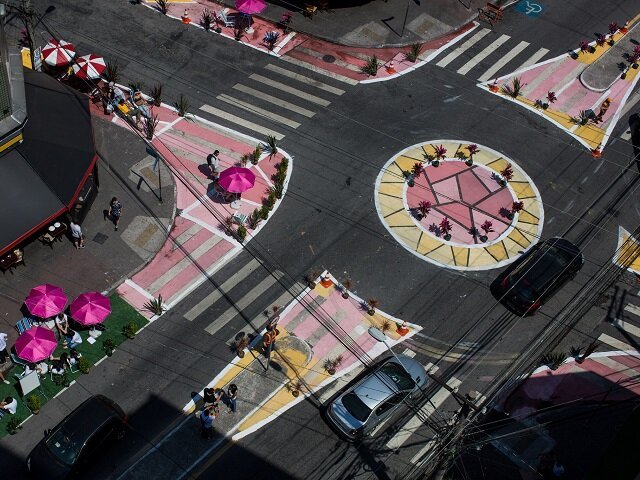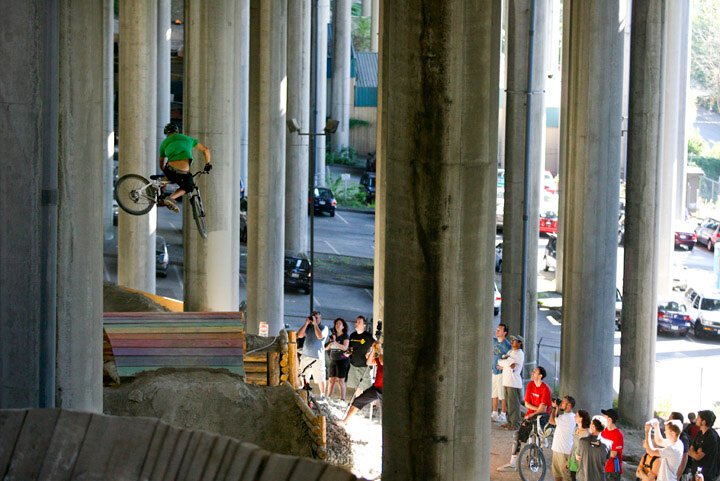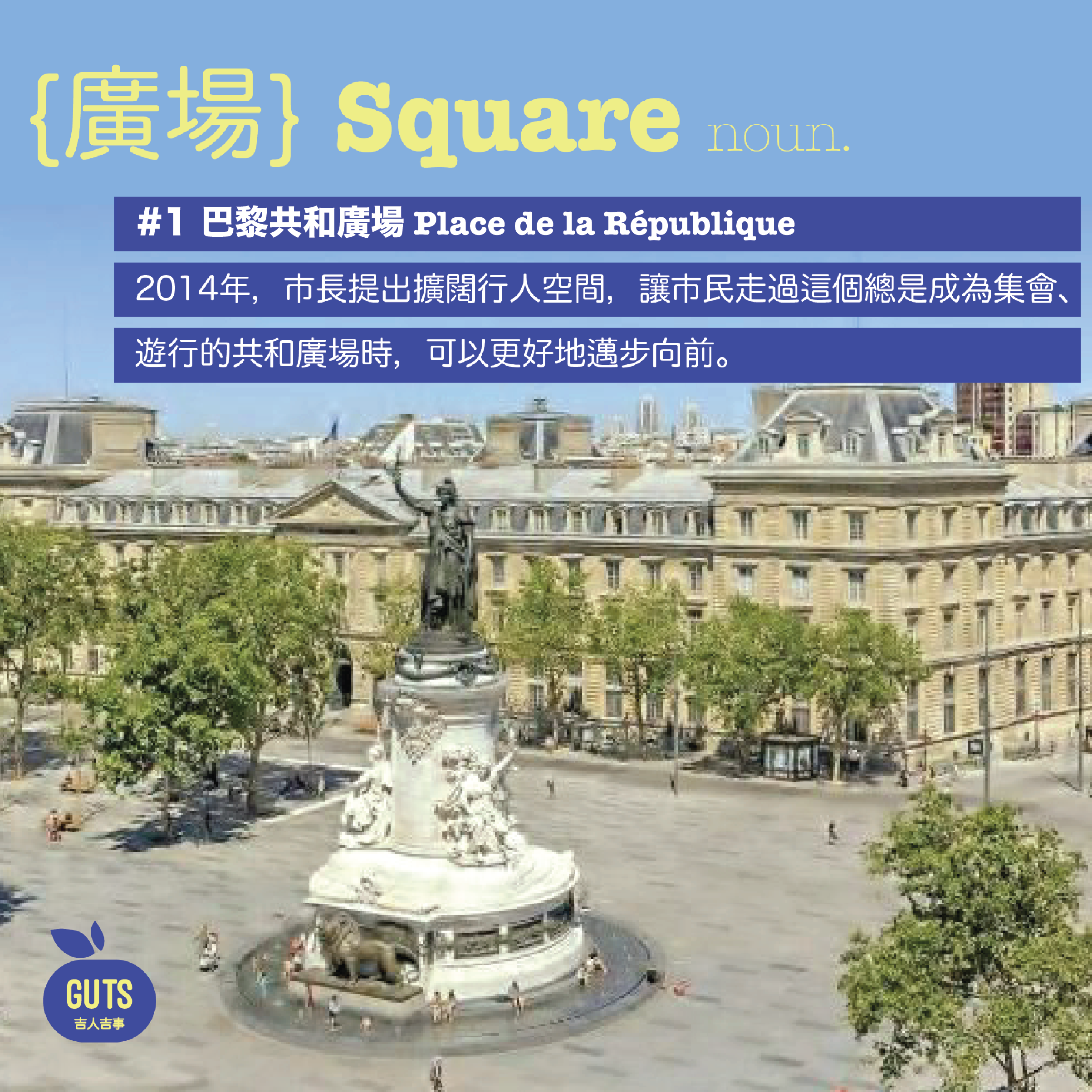巴西吉事:拉闊行人路,拉近人距離|GUTS in Brazil: wider sidewalk, closer people







香港人多車多,在橫街窄巷,人車爭路險象環生的場面天天發生。根據運輸署的統計,2018年,香港每日平均有近10個行人被車撞倒。要營造更好的步行空間、保障行人安全,除了加設欄杆,還有沒有更好的方法?
面對類似的問題,巴西政府在全國最多行人遇上交通意外的大街,進行了一次吉事實驗,為繁忙的道路來個大膽改造,把一直以來「汽車優先」的傳統改成「行人優先」。在福塔萊薩 (Fortaleza) 巿中心,Rua Barão do Rio Branco 大街,原本車路佔據路面 67%,狹窄的行人路,不足以應付龐大的行人流量。2017 年,政府把這裏3條行車線減至 2 條,騰出臨時空間給行人使用。因為是試驗性質,這個新的步行空間,改造過程簡單又經濟,例如於路面髹上繽紛的油漆代替填補石屎,再擺放長櫈、大型盆栽等 。結果,在車路步行的人大減 92 %,馬路上的車速也減慢了,這一年福塔萊薩的交通意外數字跌了 9%。
福塔萊薩的街道改造,營造出一個安全的步行環境,最受惠的是長者、兒童、殘疾人士和他們的照顧者。當局統計過,街道改造過後,兒童使用人數多了3倍!擴闊了行人路,令街道上的檔販及小店生意也更好,途人有駐足觀看的空間,同時更容易使用手推車運送商品。此外,這裡亦創造了新的公共空間,周末晚上有音樂表演、工作坊等。這個試驗計劃很快就獲得廣泛認同,政府決定把這次實驗式改動變成永久設置,也將這種模式推展至其他城巿。
大城巿要在繁忙街道改善步行環境並不容易,但行動最實際,最近不少國家因為疫情蔓延、公共交通需求大減,都趁機闢出更多步行空間、鼓勵步行:紐約在五月關閉了超過 60 公里長的車路,當中十分之一已劃成行人專用區;倫敦交通局甚至認為擴闊行人路、開闢單車線等臨時措施,更有潛力變成永久措施。
回看香港,運輸署同樣在 2017 年推出「香港好.易行」計劃,為改善行人環境及解決交通問題,提出在中環和深水埗進行試點,不過至今仍然停留於收集意見的階段。與其紙上談兵,巴西政府簡單創新的試驗方法,對想改善香港步行空間的吉人來說,又會否帶來一些啟發?
GUTS:Dictionary:與「可步行性」相關的概念
Connectivity 連貫性
「Connectivity連貫性」是「可步行性」概念中的另一個元素。美國肯塔基大學園境建築學系副教授 Jayoung Koo 認為,連貫性高的街道網絡,讓行人可從不同的起點,安全及舒適地步行至目的地,不必與汽車爭路。
Car-free Sunday 無車星期日
每年的 9月22 日是「國際無車日」,鼓勵城巿人自願棄用私家車一天。無車日首先起源於歐洲,因為汽車造城的環境污染日益嚴重,1998年法國綠黨發起「In Town.Without My Car」活動,呼籲巿民停止駕車。翌年,歐盟把9月22日正式列為「國際無車日」,全球逾1500個城巿紛紛響應。
相片來源:網上圖片、Global Designing Cities Initiative
地點 : 巴西、紐約、倫敦
What’s the GUTS idea in making Hong Kong’s streets safer and more walkable? In the narrow and winding streets of Hong Kong, packed with pedestrians and vehicles, scenes of ?? According to the Transport Department, an average of 10 pedestrians were involved in a car crashes every day in 2018. Apart from putting up more standard railings along the sidewalk, are there any other ways to create a better walking space at the same time ensuring pedestrian safety?
In the car-centric downtown Fortaleza, Brazil, traffic accidents used to be 70% higher than the rest of the city. Along a popular commercial street Rua Barão do Rio Branco, it was normal to see over 200 people per hour crammed in narrow sidewalks, or even forced to ‘overthrow’ to the roadbed. In 2017, the Brazilian government has taken major steps to redesign the street by reclaiming one travel lane for pedestrians. The road space for cars was then drastically reduced from 67% to 40%. As interim measures, the government used simple materials such as paint, benches, bollards, and planters to quickly put the idea into practice, and evaluate impacts. Soon after, the government found that drivers were slowing down, and numbers of pedestrians walking on roadbed was significantly dropped by 92%.
Reclaiming space for pedestrian in Fortaleza is bringing safer walking environment to the elderly, children, caregivers, and people with physical challenges. The project team measured the impact of the reform and found that there were 3 times more children users on the pedestrian facilities, 65% more people lingered on the street and brought positive impact commercially to the shops. It has also made logistics easier as hand carts can now be used conveniently to deliver goods. Simultaneously, the street has become more vibrant during weekends, as space is now available for music shows and workshops. With these amazing changes, the Brazilian government decided to permanently reform the street, and introduce such measures to other cities.
Despite reclaiming streets for pedestrian is more challenging for big cities, COVID-19 is now pushing the boundaries for such reform. Recently, major big cities are making plans to prioritize people over cars in maintaining social distancing. New York is closing 60km of road in the city in May, with 10% dedicate for pedestrian zone. In London, cycle lanes and sidewalks are temporary extended and widened to encourage walking and cycling, while the mayor said that such plan could become permanent.
In Hong Kong, the Transport Department attempted to create pedestrian-friendly, walkable spaces by launching the ‘Walk in Hong Kong’ scheme in 2017. Central, Sham Shui Po were then selected as pilot but still stayed in the process of public consultation until today. The Brazilian government walked the talk with experimental interim measures and successfully created a walkable Fortaleza, does this ring a bell for GUTSMAN in Hong Kong?
GUTS:Dictionary:Walkability and related concepts
Connectivity
Connectivity is another key element contributing to walkability. Jayoung Koo, associated professor of landscape architecture in the University of Kentucky suggests that streets with high connectivity allows pedestrians to “safely, comfortably walk or bike to their destinations without having to get on to the road and share it with motor vehicles.
Car-free Sunday
World Car-free Day, an annual international day to celebrate on September 22, is a day where people are encouraged to get rid of cars. As air quality was getting heavily polluted by vehicle emission, the Green Party in France initiated a campaign namely ‘In town, without my car!’ to encourage citizens to not use their cars. A year later, the European Union pushed forward this initiative to a larger scale and created World Car-free Day on September 22, which is now widely supported by over 1500 cities globally.
Photos source: Internet, Global Designing Cities Initiative
Location: Brazil, New York, London
你可能對以下吉人吉事有興趣:
You may also be interested in these GUTS Stories:
















